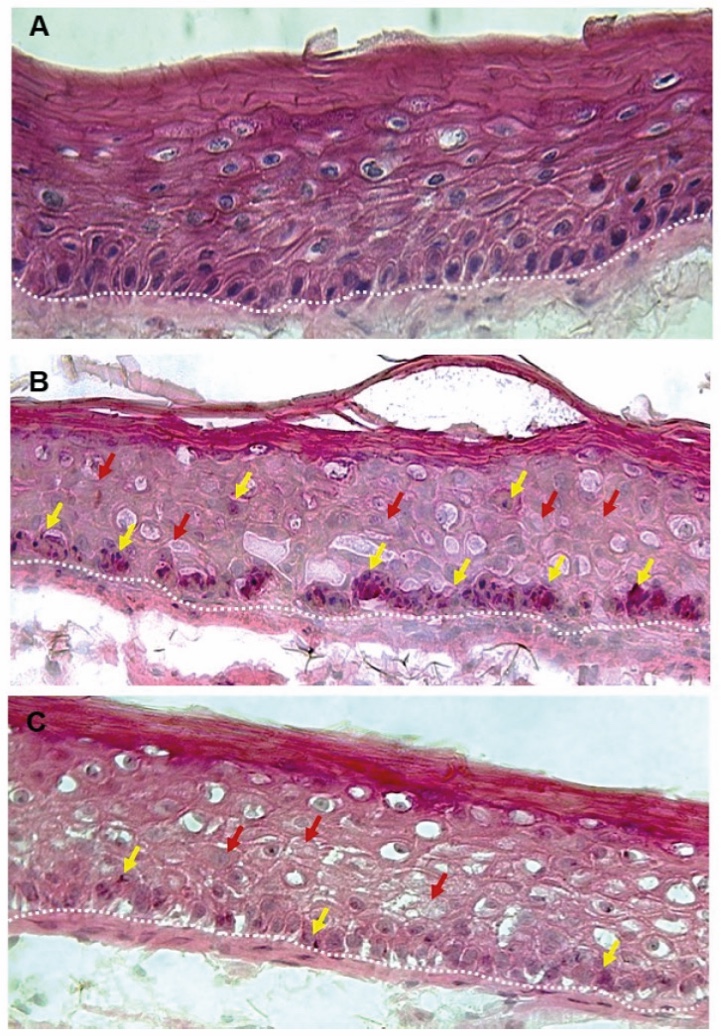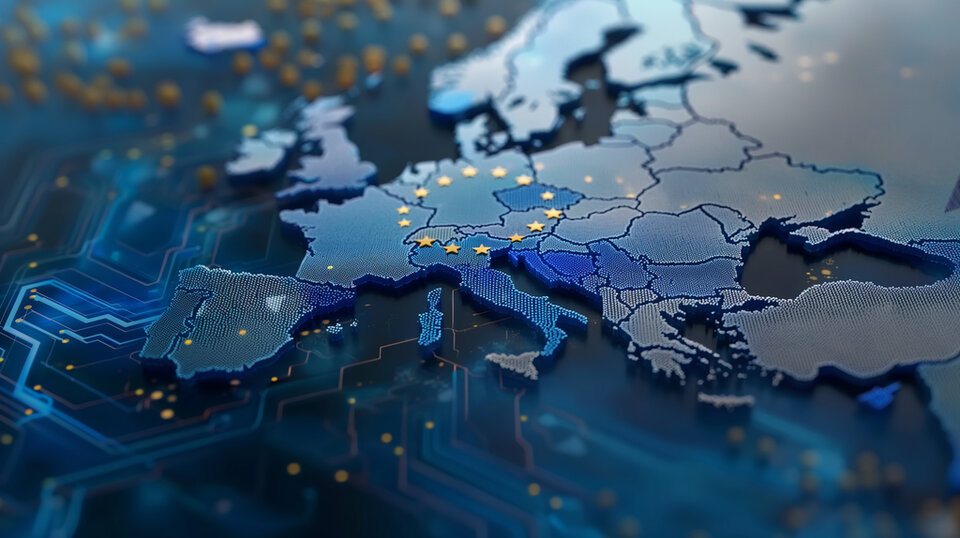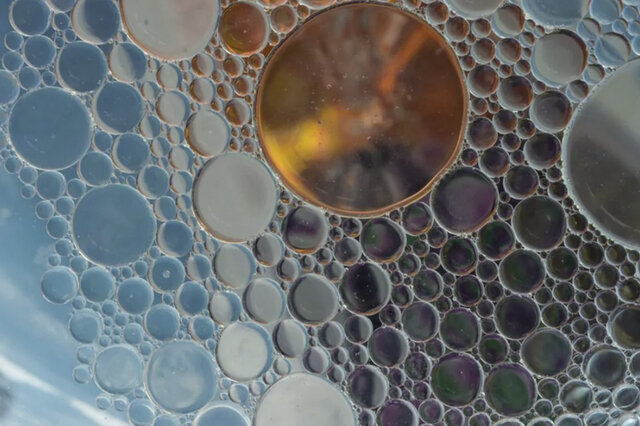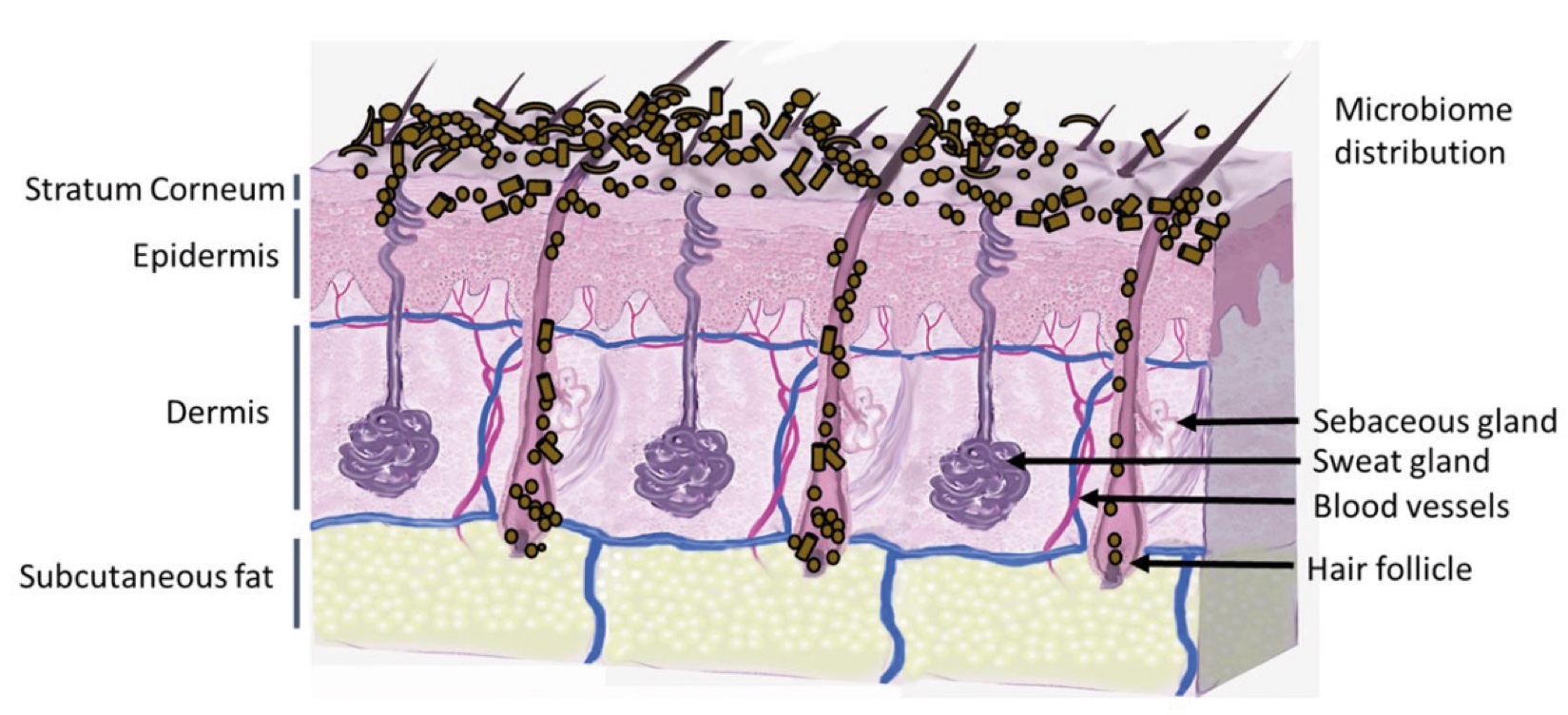
Cleaning
Skin care
peer-reviewed
The EU Detergents Regulation: A revision
to foster innovation & competitiveness
JULIE JANSSIS1, MAJLINDA COBAJ2
1. Senior Scientific and Regulatory Affairs Manager, A.I.S.E.
2. Senior Public Affairs Manager, A.I.S.E.
ABSTRACT:
The revision of the Detergents Regulation is a significant ongoing process aimed at updating the regulatory framework to align with contemporary challenges and sustainability goals, while ensuring the competitiveness of the European market. The European Commission, in collaboration with the European Parliament and the Council, is actively working on finalising the revised regulation. The trilateral discussions among these bodies (called “trilogues”) have just started and a consensus on the proposed changes will need to be found. What are some of the key topics that will be discussed and what is the expected timeline for the new Detergents Regulation to be published?
??????????????????
“
“A study in healthy women providing probiotic yogurt for four weeks showed an improvement in emotional responses as measured by brain scans”

Figure 1. Skin Section with Microbiome. Most microorganisms live in the superficial layers of the stratum corneum and in the upper parts of the hair follicles. Some reside in the deeper areas of the hair follicles and are beyond the reach of ordinary disinfection procedures. There bacteria are a reservoir for recolonization after the surface bacteria are removed.
Materials and methods
Studies of major depressive disorder have been correlated with reduced Lactobacillus and Bifidobacteria and symptom severity has been correlated to changes in Firmicutes, Actinobacteria, and Bacteriodes. Gut microbiota that contain more butyrate producers have been correlated with improved quality of life (1).
A study in healthy women providing probiotic yogurt for four weeks showed an improvement in emotional responses as measured by brain scans (2). A subsequent study by Mohammadi et al. (3) investigated the impacts of probiotic yogurt and probiotic capsules over 6 weeks and found a significant improvement in depression-anxiety-stress scores in subjects taking the specific strains of probiotics contained in the yogurt or capsules. Other studies with probiotics have indicated improvements in depression scores, anxiety, postpartum depression and mood rating in an elderly population (4-7).
Other studies have indicated a benefit of probiotic supplementation in alleviating symptoms of stress. In particular, researchers have looked at stress in students as they prepared for exams, while also evaluating other health indicators such as flu and cold symptoms (1). In healthy people, there is an indication that probiotic supplementation may help to maintain memory function under conditions of acute stress.
Detergents are regulated by the Detergents Regulation (EC) No 648/2004 (1), which establishes common rules to enable detergents and surfactants to be sold and used across the EU, while providing a high degree of protection to the environment and human health. The regulation came into effect in 2005 and has been updated several times since its introduction to harmonise the rules for placing detergents and surfactants for detergents on the EU market.
The Detergents Regulation is currently undergoing a major revision, which was undertaken with the following goals:
- Alignment with the objectives of the European Union, in terms of sustainability and digital transition: Specific provisions were introduced to take into account the sustainability of detergents and make sure that the information provided on these products would also be available digitally.
- Addressing market developments: The market for detergents has evolved significantly since the original regulation was adopted. New products, such as microbial cleaners, have emerged, necessitating updated regulatory guidelines.
- Simplifying regulations: The revision seeks to reduce legislative overlap with other EU regulations and to simplify compliance for manufacturers.
Furthermore, the Commission President’s guidelines for the period of 2025 – 2029 are setting the ground to boost the competitiveness of the EU industry and strengthen the EU internal market. In this regard, the Commission will publish several communications to simplify the implementation of EU legislations, to ensure that the legislations are fit for small and medium-sized enterprises (SMEs) and cut the administrative burden necessary to comply with EU legislation. The Trilogues are an opportunity to bring the Detergents Regulation in line with the Commission’s ambition, lifting administrative burdens for SMEs, but also supporting innovation and competitiveness for the whole detergents sector.

The Commission’s legislative proposal (2) for a revision of the Detergents Regulation was published in April 2023, the European Parliament’s text (3) was concluded in February 2024 and Council’s General Approach (4) in June 2024. The European elections and, consequently, the confirmation of new members of the Parliament and Commission delayed the start of the interinstitutional negotiation process for several months. However, the trilogue discussions have just started and are expected to bring clarity to the provisions included in the future regulation.
Specific topics are expected to be debated. These include amongst others:
Biodegradability
The revised regulation places a strong emphasis on the biodegradability of detergent components. While the European Commission maintained the already existing biodegradability criteria for surfactants, the proposals from the European Parliament and Council aim for other types of ingredients to be biodegradable. The specific criteria for biodegradability and the timeline for their implementation are key points of discussion.

While the industry supports the aim to achieve biodegradability for detergents, it would however be premature to introduce biodegradability requirements for all ingredients, as feasibility analysis and impact assessment need to be performed first, so that product performance would be ensured. A decrease in the performance of a detergent would indeed have consequences in terms of sustainability: for example, if end-users needed to rewash their clothes or plates several times to achieve the same level of cleanliness, this would result in an increase of water and energy consumption.
Furthermore, the scientific test methods and criteria would need to be adapted to evaluate the biodegradability of the newly considered ingredients, as existing biodegradability criteria and test methods for surfactants are not well suited for more sophisticated ingredients such as polymers. These adaptations would need to be based on scientific data, literature and research, which would need to be aggregated and evaluated to establish new proper criteria and methods.
- Phosphorus content
The Impact Assessment established by the European Commission concluded that the currently existing phosphorus limits for consumer laundry detergents and consumer automatic dishwasher detergents were sufficient to limit the risk of phosphorus release in the environment, which might lead to eutrophication in aquatic conditions. While the proposals made by the Commission and the Council did not extend the scope of the phosphorus limits, the Parliament’s proposal introduces new phosphorus content limits for a series of consumer products but also industrial and institutional (I&I) products.
As the I&I detergents sector was proven not to be a major contributor of phosphorus releases in surface waters (according to a publication by UBA (5), the German Environmental Agency), the detergents industry recommends not to extend any new phosphorus limits to industrial and institutional cleaning products.Those products are essential to ensure cleanliness and hygiene in hospitals, public spaces, the HORECA sector, food production, etc. The I&I products are expected to have a high performance in a short time, and phosphorus is a key ingredient enabling these processes. Limiting phosphorus content in I&I products would therefore have huge repercussions for these sectors, both in terms of product efficiency and in terms of sustainability. - Digital Product Passport
Initially created under the scope of the Ecodesign for Sustainable Products Regulation (ESPR), the digital product passport (DPP) aims to facilitate access to information for relevant stakeholders and is playing a part in the digitalisation transition planned by the European Commission. While corresponding to a digital tool, the DPP would be accessible through the presence of a data carrier present on the packaging, which could be scanned to access the relevant information. Although the DPP is originally under the scope of ESPR, it is also planned for specific provisions on the DPP for detergents to be integrated in the Detergents Regulation revision. It is therefore essential to ensure consistency between the two pieces of legislations, both in terms of provisions and in terms of timing for implementation, so that the DPP can be created in an effective manner. Conflicting requirements should be avoided at all costs, to reduce uncertainty and limit legislative overlap between EU regulations.
Furthermore, while ESPR mentions that the DPP could be created at a model, a batch or an item level, it remains essential for the detergents industry that the digital product passport would be developed at a model level only. Since the detergents sector represents an industry of fast-moving goods, where multiple production batches are generated, an implementation of the digital product passport at a model level is the only manner for the industry to implement the DPP while not generating more packaging scrapping than necessary. A change of DPP indeed imposes a change of packaging due to the data carrier being present on that product’s packaging. The model, defined as a group of detergents having the same manufacturer and the same specific composition, will allow for the detergents industry to guarantee proper access to information while avoiding packaging scrapping and unnecessary costs for the industry.
- Microbial cleaners
The use of microbial cleaning products is a growing trend in the detergence industry. Microorganisms used in detergents harness natural processes to break down dirt. They can be highly efficient, often requiring only small amounts in the microbial cleaner to deliver their benefits, both in terms of performance and sustainability. The revised regulation aims to provide clear guidelines for these products, ensuring their safety and efficacy. Microbial cleaners were indicated to have to pass specific tests in the proposals from the Commission and Parliament.
The Council’s General Approach, however, proposes a holistic approach to evaluate the safety of microbial cleaners: it introduces a risk assessment as the basis for allowing products on the market and suggests a future risk assessment methodology to be created for microorganisms used in detergent products.
The detergents industry recognises that the development of innovative products, namely microbial cleaners, requires the provisions of the Detergents Regulation to be adapted. As such, the creation of a harmonised legislative framework to clarify the way microorganisms are regulated in detergent products is supported by the industry.
The European Commission has recently proposed a series of actions to boost biotechnology and biomanufacturing (6) in the EU, to ensure competitiveness of the European market. The future risk assessment linked to microbial cleaners would be a way to ensure the safety of these products, while supporting biotechnology in the EU by not imposing overly restrictive limits to the format in which these products can be sold or in the types of applications where they can be used.
The negotiations on the revision of the Detergents Regulation are anticipated to be concluded in the second quarter of 2025 and the new legislation entering into force by early 2026. A.I.S.E. and our members remain committed to continue the dialogue with the Council, Commission, and European Parliament, and ensure that this revision will lead to a future-proof regulation that fosters innovation, boosts consumer safety and sustainability, whilst supporting a stronger internal market.
Read more about A.I.S.E.’s engagement on www.aise.eu
Conclusion
The future of cosmetics lies in the continued evolution of holistic approaches which represents a transformative shift in the industry, merging scientific advancements, natural ingredients, and wellness principles. By understanding and embracing the interconnectedness of these elements, the cosmetics industry can cultivate products that not only enhance external beauty but also contribute to the overall well-being of individuals and the planet.
The interplay between beauty from within and topical cosmetics is the key for future products. The integration of biotechnology and green chemistry is revolutionizing cosmetic formulations, offering sustainable and biocompatible alternatives.
Developers can implement blockchain to trace the journey of ingredients from source to product. Nevertheless, the efficacy of the natural products should be scientifically proven. Marketers can communicate transparency as a brand value, and parallelly educate consumers by highlighting how specific ingredients contribute to radiant and healthy skin.
By embracing the synergy between these approaches and leveraging scientific advancements, the cosmetics industry can provide consumers with comprehensive beauty solutions that cater to both internal and external dimensions of beauty.
Surfactant Applications

The application area lends itself particularly well to the use of AI. Active today in this area is the US company Potion AI (6). The company provides AI-powered formulation tools for beauty and personal care R&D. Their offerings include Potion GPT, next generation ingredient and formula databases and AI document processing. Potion’s work could have a significant impact on the entire surfactant value chain, from raw material suppliers to end consumers. By using their GPT technology, they can help target work toward novel surfactant molecules that have optimal properties for specific applications. By using their ingredient and formula databases, they can access and analyze a vast amount of data on surfactant performance, safety, and sustainability. By using their AI document processing, they can extract and organize relevant information from patents, scientific papers, and regulatory documents. These capabilities could enable Potion AI's customers to design and optimize surfactant formulations that are more effective, eco-friendly, and cost-efficient. A particularly interesting application for this type of capability is deformulation.
Deformulation is the process of reverse engineering a product's formulation by identifying and quantifying its ingredients. Deformulation can be used for various purposes, such as quality control, competitive analysis, patent infringement, or product improvement. However, deformulation can be challenging, time-consuming, and costly, as it requires sophisticated analytical techniques, expert knowledge, and access to large databases of ingredients and formulas.
AI can potentially enhance and simplify the deformulation process by using data-driven methods to infer the composition and structure of a product from its properties and performance. For example, AI can use machine learning to learn the relationships between ingredients and their effects on the product's characteristics, such as color, texture, fragrance, stability, or efficacy. AI can also use natural language processing to extract and analyze information from various sources, such as labels, patents, literature, or online reviews, to identify the possible ingredients and their concentrations in a product.

Figure 2. Skin Section with Microbiome. Most microorganisms live in the superficial layers of the stratum corneum and in the upper parts of the hair follicles. Some reside in the deeper areas of the hair follicles and are beyond the reach of ordinary disinfection procedures. There bacteria are a reservoir for recolonization after the surface bacteria are removed.
References and notes
- European Parliament, Council of the European Union. Regulation (EC) No 648/2004 of the European Parliament and of the Council of 31 March 2004 on detergents (Text with EEA relevance) [Internet]. 2004 [cited 2025 Feb 10]. Available from: https://eur-lex.europa.eu/legal-content/en/ALL/?uri=CELEX%3A32004R0648
- European Commission. COM(2023)217 - Proposal for a regulation of the European Parliament and of the Council on detergents and surfactants, amending Regulation (EU) 2019/1020 and repealing Regulation (EC) No 648/2004 [Internet]. 2023 [cited 2025 Feb 10]. Available from: https://single-market-economy.ec.europa.eu/publications/com2023217-proposal-regulation-detergents-and-surfactants_en
- European Parliament. P9_TA(2024)0091 – European Parliament legislative resolution of 27 February 2024 on the proposal for a regulation of the European Parliament and of the Council on detergents and surfactants, amending Regulation (EU) 2019/1020 and repealing Regulation (EC) No 648/2004 (COM(2023)0217 – C9-0154/2023 – 2023/0124(COD)) [Internet]. 2024 [cited 2025 Feb 10]. Available from: https://www.europarl.europa.eu/doceo/document/TA-9-2024-0091_EN.pdf
- Council of the European Union. Interinstitutional File: 2023/0124(COD) - Proposal for a Regulation of the European Parliament and of the Council on detergents and surfactants, amending Regulation (EU) 2019/1020 and repealing Regulation (EC) No 648/2004 - Mandate for negotiations with the European Parliament [Internet]. 2024 [cited 2025 Feb 10]. Available from: https://www.consilium.europa.eu/media/dhlfmbkq/st11205en24.pdf
- Mensch F, Abschlussbericht U, Mehlhart G, Bulach K, Moch M, Blepp. Relevanz der gewerblichen Textil-und Geschirrreinigung am Eintrag von Phosphat und anderen Phosphorverbindungen (P) in das Abwasser [Internet]. Dessau-Roßlau: Umweltbundesamt; 2021 [cited 2025 Feb 10]. Available from: https://www.umweltbundesamt.de/sites/default/files/medien/5750/publikationen/2021-06-24_texte_98-2021_gewerbliche_phosphateintraege.pdf
- European Commission. Commission takes action to boost biotechnology and biomanufacturing in the EU [Internet]. 2024 [cited 2025 Feb 10]. Available from: https://ec.europa.eu/commission/presscorner/detail/en/ip_24_1570
- A.I.S.E. A Year in Review - A.I.S.E.’s activities in 2023-2024 [Internet]. 2024 [cited 2025 Feb 10]. Available from: https://aise.eu/app/uploads/A-year-in-review_-A.I.S.Es-activities-in-2023-2024-compressesd.pdf

